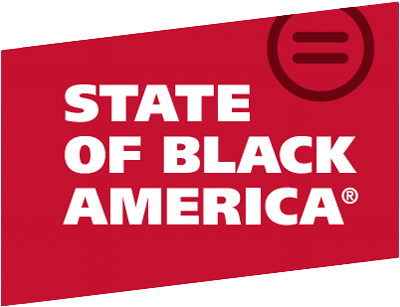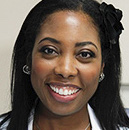Throughout the history of our nation’s civil rights movement, images played an important role in conveying the struggle for equality. In this era of widespread media access, near universal adoption of social media platforms and the rapid dissemintation of content, images hold an even greater importance in conveying messages—both good and bad.
For communities of color, especially in our urban areas, we have often been denied the ability to portray ourselves in mainstream media in a positive way. Recently, a new trend has emerged that has seen an increase in our ability to see ourselves in our fullest depth, breadth and potential. Shows created by visionaries such as Shonda Rhimes demonstrate our wide-ranging experiences and abilities in ways we only dreamed about just a few years ago. This on-screen success has led to the rapid development of programming that builds on this work and shines an overdue light on the diversity of our experiences. For example, Yara Shahidi’s current work on Black-ish and Grown-ish not only provides a new discussion point on our media landscape, but it is a crucial media image for many millennials.
But even with all this success, we must also acknowledge that the foundation of self-esteem and the internalizing of beliefs of what we can achieve starts in childhood. Unfortunately, the images we have traditionally celebrated in mainstream children’s programming have lacked diversity. But there is one clear example in recent history that demonstrates the true power of positive images in children’s media and is likely to have a historic ripple effect on our healthcare system.
On March 23, 2012, Disney premiered the children’s television show Doc McStuffins on its Disney Junior network. I sat down with my youngest daughter that day to watch the show and was truly amazed by the powerful images I saw on the screen. Doc McStuffins was the first children’s television show in the history of American television to feature an African-American girl as the lead character. In addition to this historic, groundbreaking fact, Disney and the show’s creator, Chris Nee, created a show where a young girl of color dreamed of following in her mother’s footsteps to become a physician. Doc McStuffins quickly became an international success and children—of all colors—eagerly asked their parents for Doc McStuffins playsets and toys.
The profound and immediate effect of the broadcast of Doc McStuffins on our nation’s healthcare system may have been lost on many viewers and fans. For generations, African Americans have been underrepresented in our nation’s physician workforce. Although African Americans are approximately 12% of the population, we make up less than 4% of the physician workforce. This lack of diversity has, among other issues, made it difficult for our society to properly address ongoing health disparities that African Americans face.
But with the success of Doc McStuffins came an immediate effect. Young children around America were redefining what a doctor in our society looks like. African-American women physicians around the nation started to share on social media how, when they entered an exam room to see a patient, children in the room would light up with excitement and gleefully express to their parents, “‘Look, mom! It’s Doc McStuffins!’”
Children of color were finally being exposed to an image of themselves they had never been allowed to imagine at such an early age. They saw a vibrant young girl and her physician mother in roles not seen since the Huxtables on The Cosby Show. In addition, they saw a father in a non-traditional role working from home. Disney and Chris Nee provided us with an opportunity to engage our children at an early age and provide them with positive reinforcement about their abilities and the probablity to succeed beyond the traditional stereotypes of sports and entertainment.
Recently, Artemis Medical Society released the Breaking Down Barriers for Women Physicians of Color report with the Greenlining Institute of Oakland, California. This national research initiative catalogued the barriers and challenges women of color experience on their journeys to become physicians. For the final report, one physician interviewee explained, “The challenge with being a little brown girl is that when you tell people it’s your aspiration to be a doctor, they don’t believe you can do it. They try to push you into nursing or something else where they have seen someone like you.” The power of Doc McStuffins is that it provides a clear and powerful response to this negative narrative.
We now have a generation of children who believe they can be physicians or pursue STEM careers. In fact, many of America’s children now believe that an African-American woman is the standard for a what a physician looks like. This is important because this type of positive media image creates an environment to engage students early on and provide them with the crucial math and science foundation they will need to complete STEM/STEAM degrees.
The challenge moving forward will be how we harness the power of these growing positive media images. How do we capture interests in STEM/STEAM career paths that popular culture media like Doc McStuffins and Black Panther have instilled in our children?
Thanks to the historic recent changes in the creation and distribution of positive media images for communities of color, we are now in a position to bring positive and historic changes to our urban centers and our nation’s workforce. To maintain this newfound success, we must be prepared to do more than just cheer this evolution of positive media images if we expect to create a generational wave of students of color who earn STEM/STEAM degrees. The challenge has been set. The next step depends on how we respond to determine and maintain our success.



